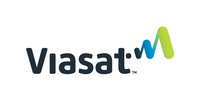LAS VEGAS – Ericsson is planning to boost data speeds and capacity by using unlicensed spectrum. The vendor’s new small cell will be put into trials by T-Mobile later in 2015. 
Ericsson has named the technology License Assisted Access (LAA) and it will essentially aggregate unlicensed airwaves around 5 GHz with licensed carrier spectrum.
Eric Parsons, head of mobile broadband product at Ericsson, is calling LAA a first step toward 5G.
Although 5G has yet to be defined, Parsons says LAA will address critical goals of the next-generation networking protocol like ubiquitous app coverage and spectrum harmonization.
“We’re calling this 4.5G. It’s a stepping stone to 5G,” Parsons said.
The product, named 6402, is a small network node designed for indoor deployments. It will pull in bandwidth from Bands 125 and 127 and compliment existing LTE coverage. Ericsson says there’s about 550 megahertz of underutilized spectrum near 5 GHz and new FCC rules will allow licensed providers to use the spectrum on a shared basis.
For T-Mobile and the other carriers worldwide who will eventually use LAA, it will allow Carrier Aggregation (CA) up to 100 megahertz. In the U.S., only Sprint holds enough licensed spectrum to get close to aggregating that size of channel.
T-Mobile CTO Neville Ray said in a blog that his company has already begun working with chipset, radio infrastructure and device partners to get the technology up and running by the end of the year.
Although no specific handset OEMs have indicated support for the new bands, Parsons seemed confident that support for Bands 125 and 127 would find its way into handsets around the time the trials will start.
T-Mobile is first to publically support the new unlicensed technology but Parsons said that more U.S. and international service providers are exploring LAA as well. He also said that Ericsson is the first vendor to come out with a timeline for putting LAA for LTE into use.
Filed Under: Wireless • 5G and more, Infrastructure




